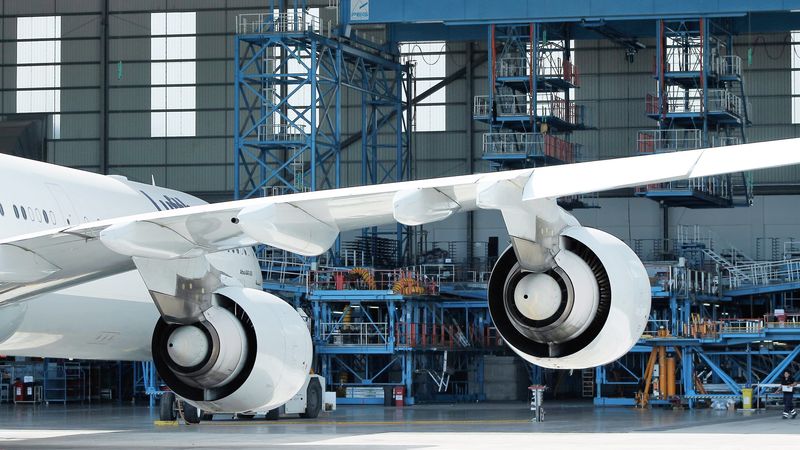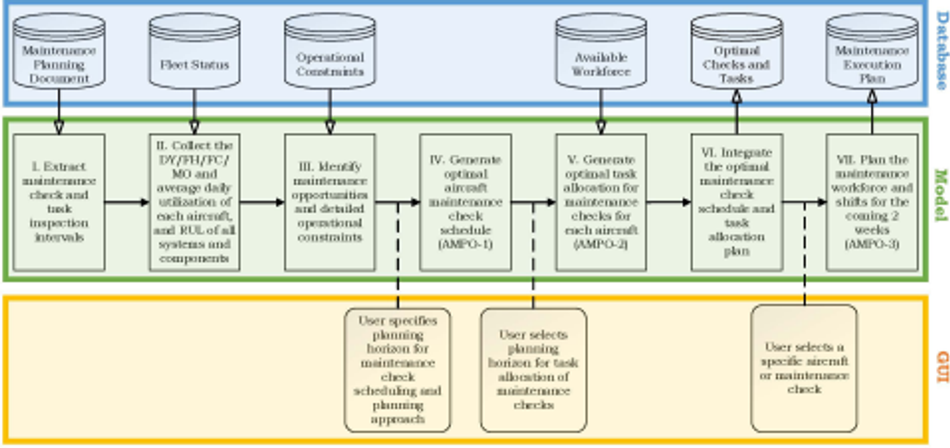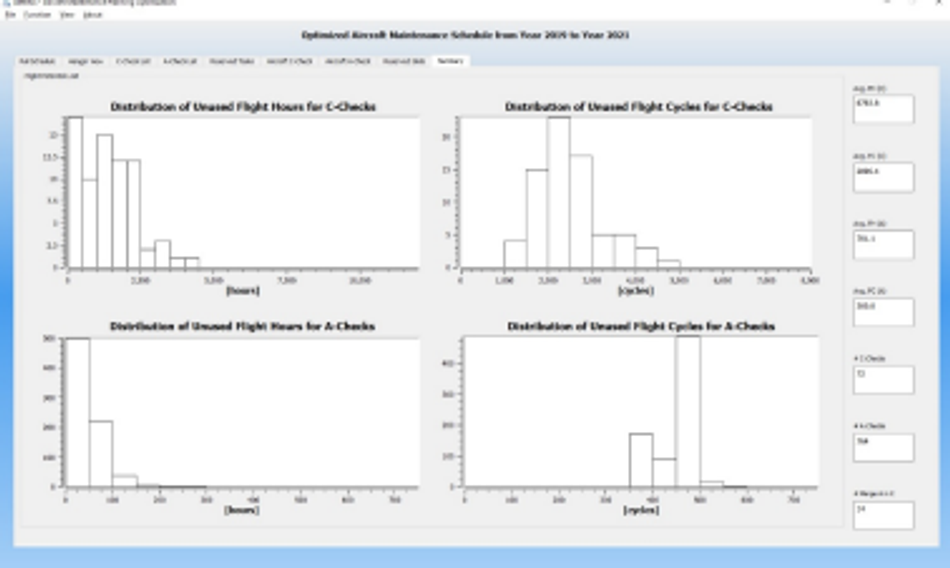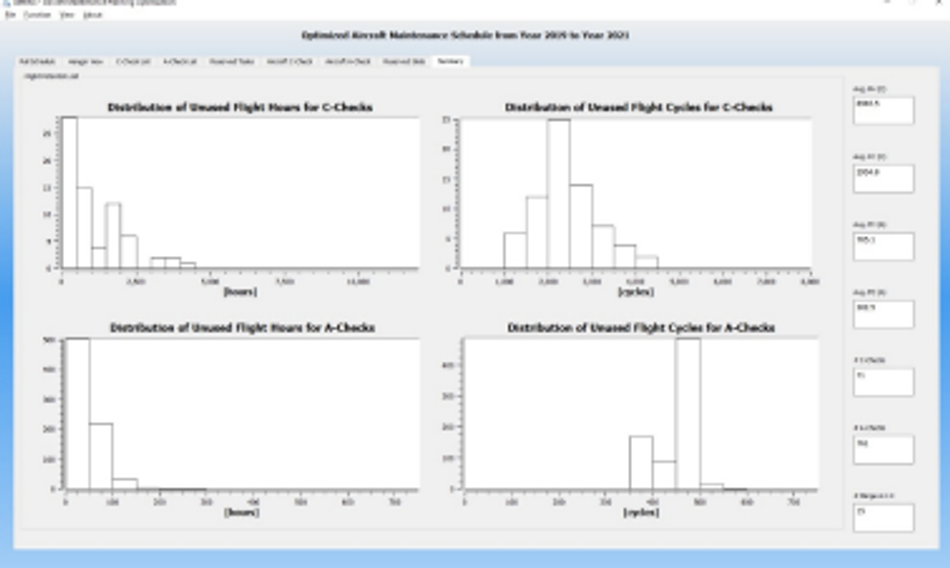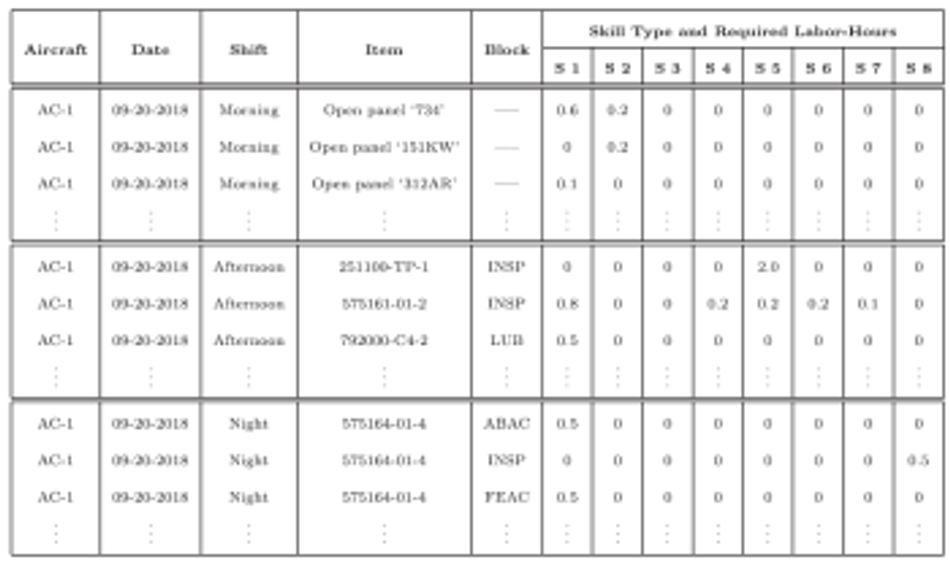A Novel Decision Support System for Optimizing Aircraft Maintenance Check Schedule and Task Allocation
Student article showcasing a software prototype for improving aircraft maintenance planning using a novel decision support system.
This article is a part of our University Technology Exposure Program. The program aims to recognize and reward innovation from engineering students and researchers across the globe.
This paper presents a software prototype of the first decision support system (DSS) for long‐term and short‐term hangar aircraft maintenance planning (AMP). Due to the lack of optimization methods and efficient approaches for AMP in current practices, airlines usually aim for feasible solutions. The presented DSS can generate a comprehensive, optimized AMP solution, including optimized aircraft maintenance check schedules and associated maintenance tasks of each check and the tasks to be executed for each morning/afternoon/evening shift.
The DSS prototype is developed using Python and for Windows operating system. It is a stand‐alone software prototype and has already been converted to an executable file. Thus, it can be run on any individual PC without installation or a license.
From a system architecture perspective, The DSS consists of three components (layers), a database, a model, and a graphical user interface (GUI), as depicted in Figure 1:
- Database: Store the input data, including the maintenance planning document (MPD) from aircraft manufacturers, fleet status, operational constraints, and available workforce from airlines.
- Model: Process input data, optimize the aircraft maintenance check schedule and maintenance task execution plan. This DSS prototype has three models for aircraft maintenance planning optimization (AMPO): aircraft maintenance check scheduling (AMPO‐1), task allocation (AMPO‐2), and shift planning (AMPO‐3).
- Graphical User Interface (GUI): Allow users to interact with the DSS and visualize the planning results and the associated key performance indicators (KPIs).
The overall optimization process within the DSS entails the following seven steps:
I. Extract maintenance check and task inspection interval
II. Collect utilization parameters of each aircraft, such as calendar days (DY), flight hours (FH), and flight cycles (FC), and collect the utilization parameters of all systems and components
III. Identify maintenance opportunities and detailed operational constraints IV. Generate optimal aircraft maintenance check schedule (AMPO‐1) V. Generate optimal task allocation for each maintenance check (AMPO‐2)
VI. Integrate the optimal maintenance check schedule and task allocation plan VII. Plan the maintenance workforce and shifts (AMPO‐3)
The AMPO‐1 generates an optimized long‐term (3—5 years) aircraft maintenance check schedule for the entire fleet in one go, while maintenance planners of airlines have to do that manually in 2—3 steps. The AMPO‐2 plans the tasks for each maintenance check for an optimized 3—5 years maintenance check schedule, compared with the current practices in which maintenance planners can only plan the maintenance tasks for the next 6—12 months.
Application
The DSS prototype was demonstrated as part of the AIRMES project (AIRMES, 2016), on 51 aircraft, in March 2019 (Qichen Deng, 2021). The demonstration was carried out in collaboration with one of the major European airlines and one of the leading aircraft manufacturers and observed by the Clean Sky 2 Joint Undertaking partners involved in the related research effort. The demonstration aimed to validate the value of the DSS and evaluate its applicability, primarily for AMP optimization and the study of future maintenance scenarios. Two test cases were performed in the demonstration but we only show one test case here for the illustration purpose, in which we aimed to validate the DSS and benchmark its performance by comparing the solution obtained with the maintenance schedule of the airline.
We compared our results with the maintenance schedule available at the airline (Airline Schedule). According to the results illustrated in Figure 2 and Figure 3, the AMPO‐1 of the DSS outperforms the planning approach of the airline. The AMPO‐1 results in 6946.5 FH for C‐check and 705.1 FH for A‐check, higher than 6783.8 FH and 701.1 FH from the maintenance schedule of the airline, but the result of AMPO‐1 has one fewer C‐check and three fewer A‐checks. Our airline partner also checks the maintenance check schedule obtained using the DSS and agrees that the DSS generates a better schedule than the maintenance planners. Besides, the AMPO‐1 of the DSS optimizes both the aircraft A‐ and C‐check schedule for 2019–2021 within only 10 min. It means that the DSS user can run the DSS to update its aircraft maintenance check schedule if there are changes instead of manually shuffling the A‐/C‐checks to make another feasible one.


After the AMPO‐2 completed the optimal task allocation for all maintenance checks, the AMPO‐3 planned the work shifts and created job cards for technicians. Our airline partner set the horizon of shift planning for two weeks. Figure 5 shows an example of the results from AMPO‐3. The 1st column shows the aircraft tail number. The 2nd and 3rd columns indicate the date and work shifts. The 4th column describes the item or action, and the 5th column tells the maintenance planner where the maintenance work is in the aircraft. The last eight columns imply the workload needed for each skill type. The airline evaluated the work shifts after the demonstration and indicated that the work shifts of the first 2—3 days are almost the same as they planned, yet the difference becomes dramatic in the second week. It is worth mentioning that, for example, if a task requires one labor‐hour for a specific skill type, it can be one technician spending an hour, or two technicians spending half an hour, or even four technicians spending 15 min performing the task.
Overall, the DSS can address aircraft maintenance planning optimization in an integrated fashion. It can automate repetitive tasks and reduce human errors while enabling fast, efficient, human-in-the-loop decision‐making in the AMP for the aviation industry.
References
[1] Ackert, S. P. (2010). Basics of Aircraft Maintenance Programs for Financiers.
[2] AIRMES. (2016). Retrieved from http://www.airmes‐project.eu/
[3] Qichen Deng, B. F. (2021). A novel decision support system for optimizing aircraft maintenance check. Decision Support Systems, 146.
About the University Technology Exposure Program 2022
Wevolver, in partnership with Mouser Electronics and Ansys, is excited to announce the launch of the University Technology Exposure Program 2022. The program aims to recognize and reward innovation from engineering students and researchers across the globe. Learn more about the program here.


